-
Tools: release 6.6.2 used for generating data; release 6.7.3, for reconstruction.
-
Known software problems on OSF (specific for Beta):
-
One can only run ~ 350 events before Beta application crashes due to Beta's memory leak.
-
No IFR information is available (most IFR modules must be disabled for the application to run), so no identified muons or K0L's. This is probably not a significant defect for this analysis.
-
No trigger simulation (~99% of the B events should still pass).
-
There appear to be numerous problems with the Drift Chamber simulation. For example, drift chamber consistencies which can be used for particle ID are not available. Some discussions related to this problem can be found in the HyperNews, for example, here, here, and here. More specifically, one gets the following warning for every event:
Warning : No T0 Calibration Data for Object 0 at Time 07/01/98 16:02:51 GMT 0 ns error: CalErr: failed, code 18, Error copying CalBank channels
Apparently, this indicates some timing problem with the Drift Chamber. Does this mean that the time of the event is not available for DCH? If so, does this in turn imply no reliable DCH track information?
-
We have used a sample of 4900 bbsim-generated signal D* pi events. The cuts used in the analysis and their efficiencies are listed below:
| Cut |
Efficiency |
| 1.9 < Pfast pion < 2.6 GeV/c |
71% |
| 0.0 < Pslow pion < 1.0 GeV/c |
99% |
| R2GL < 0.5 |
80% |
| |s| < w + 1.0 |
46% |
where s and w are defined in Owen's presentation.
-
Overall efficiency & comparison with CLEO results
At this point, the efficiency of this analysis for signal is ~25%. On the other hand, the efficiency that the CLEO analysis gives (see, for example, CLEO CBX note 96-69 for details) is ~43%. It is not yet clear why we are getting an efficiency almost twice as low. It is probably related to the current software problems some of which are listed above.
-
Some kinematic distributions (see Owen's presentation for definitions)
|
Momenta distributions:
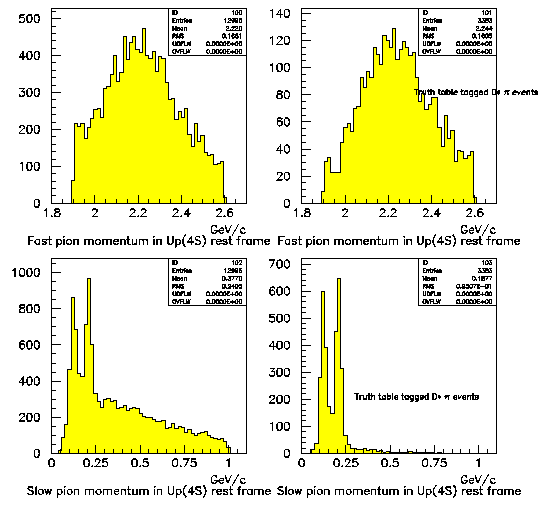
|
|
Cone angles:
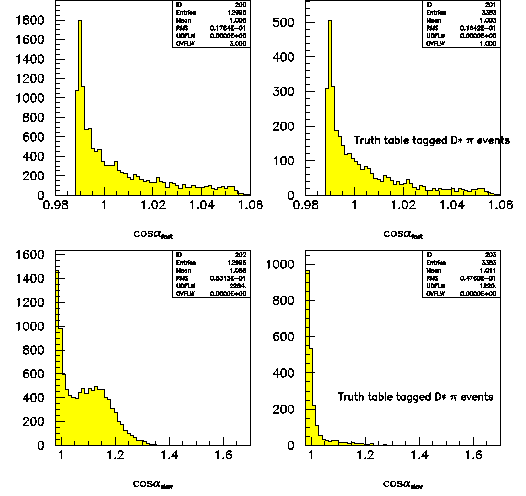
|
|
Angle between the fast pion and the direction opposite to the slow pion:
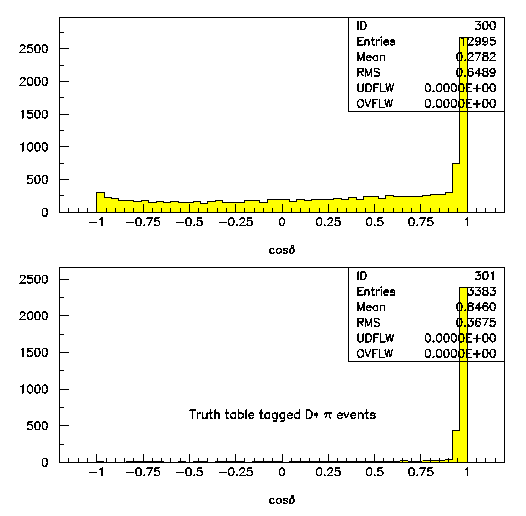
|
|
Cos(Phi):
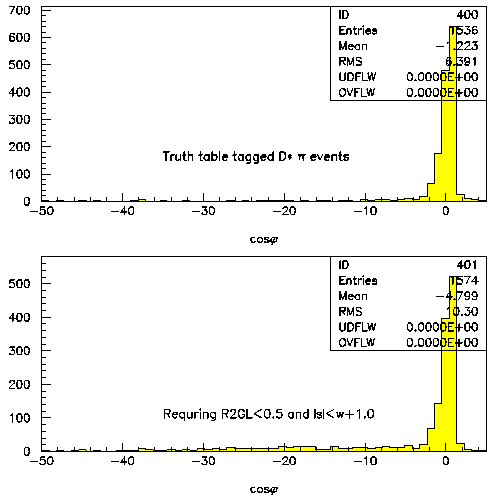
|
|
R2GL:
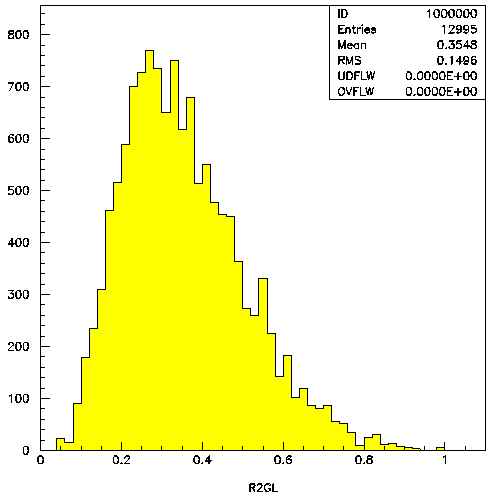
|
-
We are planning on using the large available MDC1/MDC2 signal/continuum/generic data sample for this analysis, and we are hoping to present some results based on this at the July Collaboration meeting.
|